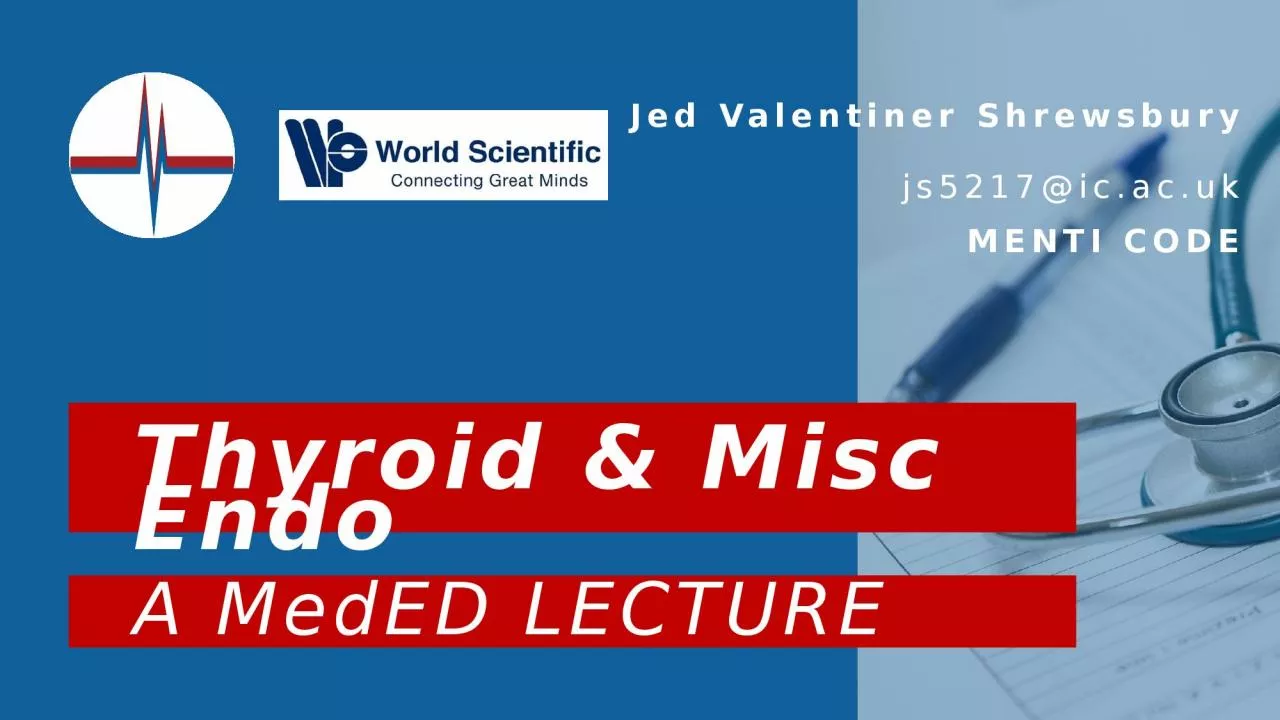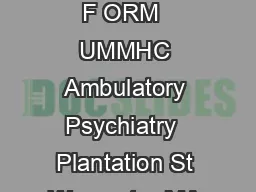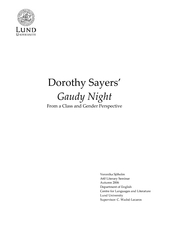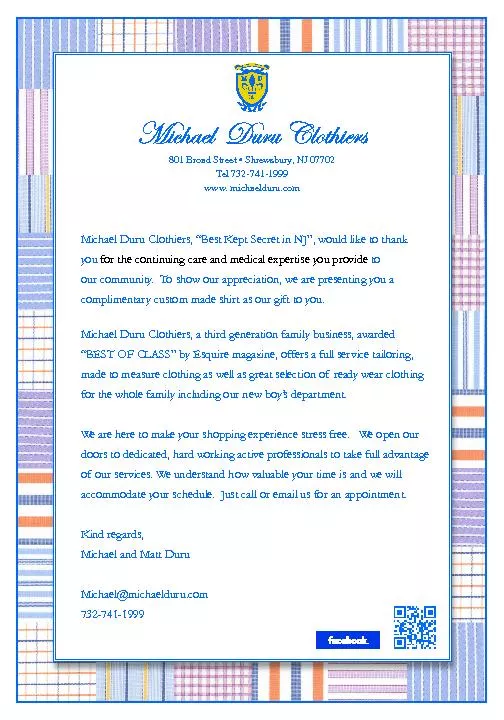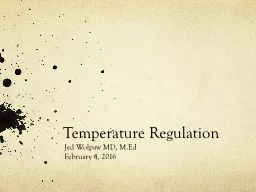PPT-Jed Valentiner Shrewsbury
Author : naomi | Published Date : 2024-03-13
js5217icacuk MENTI CODE Thyroid amp Misc Endo A MedED LECTURE SESSION STRUCTURE Quick recap of hyperhypothyroidism Understand what is meant by thyroid eye disease
Presentation Embed Code
Download Presentation
Download Presentation The PPT/PDF document "Jed Valentiner Shrewsbury" is the property of its rightful owner. Permission is granted to download and print the materials on this website for personal, non-commercial use only, and to display it on your personal computer provided you do not modify the materials and that you retain all copyright notices contained in the materials. By downloading content from our website, you accept the terms of this agreement.
Jed Valentiner Shrewsbury: Transcript
Download Rules Of Document
"Jed Valentiner Shrewsbury"The content belongs to its owner. You may download and print it for personal use, without modification, and keep all copyright notices. By downloading, you agree to these terms.
Related Documents

